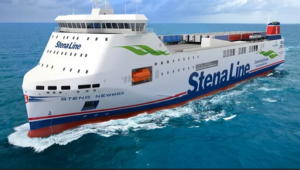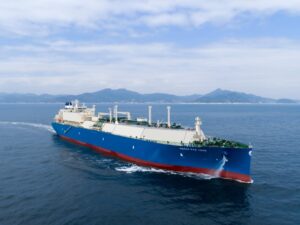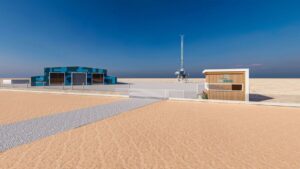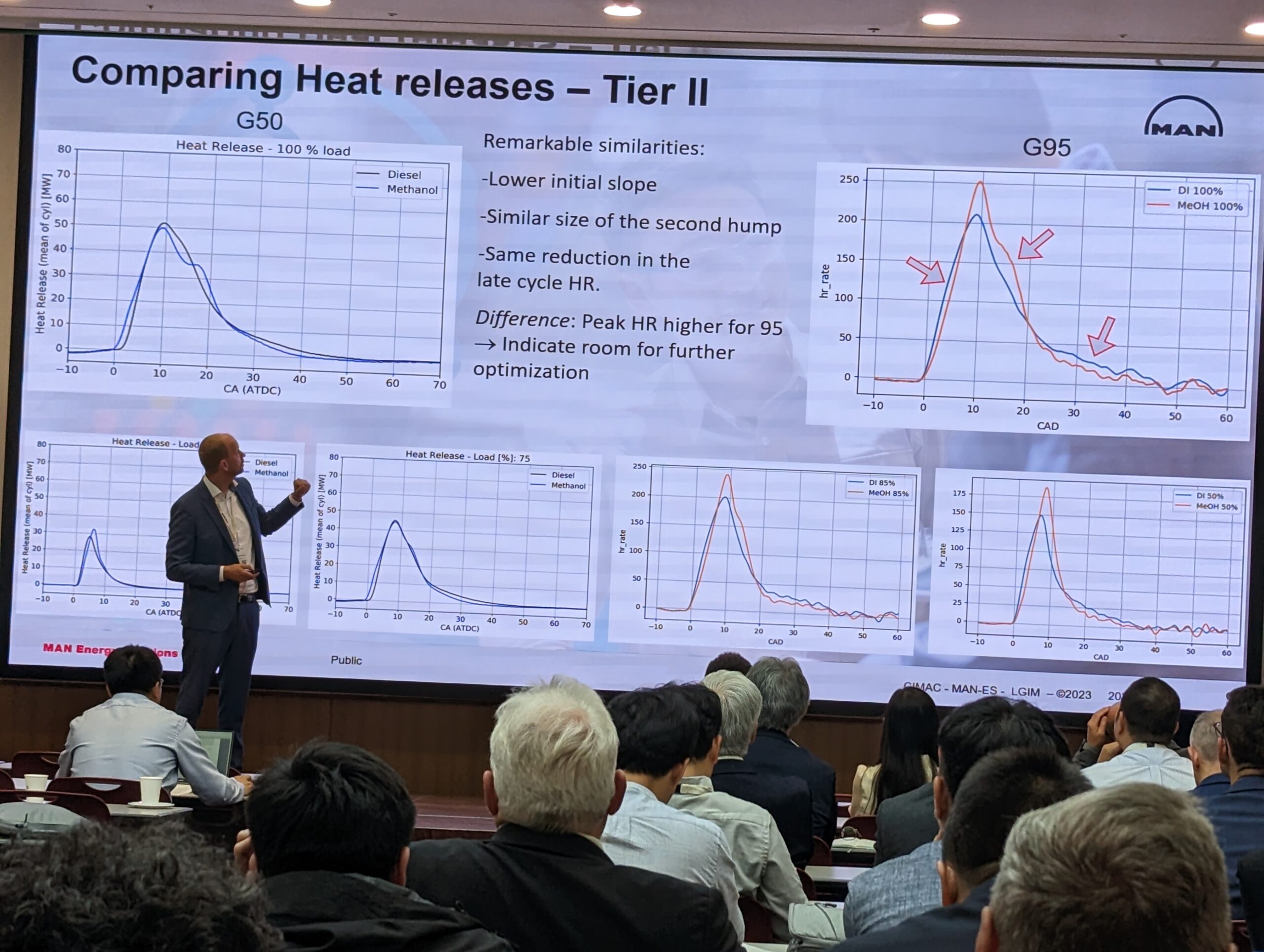As methanol engines momentum advances, updates from engine developers revealed that serious gaps remain in developing safe and viable technologies for zero-carbon fuels.
Engine technology is in urgent need of innovation as industry confronts the challenges of decarbonisation, leading engineers have warned on the first days of CIMAC Congress. As industry conversation increasingly takes for granted shipping’s move to carbon-neutral and zero-carbon fuels, presenters at the triennial gathering of the international engine association revealed the latest steps in preparing engine technology for the new fuel palette.
The most well-attended presentations of the day were both from MAN Energy Solutions, which detailed its rapid development in methanol dual-fuel technology and the start of its ammonia engine testing.
On methanol, Morten Vejlgaard-Laursen explained that the current challenge is in optimising new engine sizes. After around seven years of experience with two-stroke engines in the small, 50-bore size on methanol carriers, the technology is being scaled to nearly double that cylinder diameter for the MAN B&W G95-LGIM engines to be deployed on Maersk’s new methanol-fuelled container vessels. Scaling has meant differences in injection patterns as well as component sizes, requiring adjustments to retain power, efficiency, and Tier III NOx compliance with both methanol and diesel.
Four-stroke methanol-fuelled engines are also reaching new levels of maturity. Wärtsilä performance expert Juho Repo explained the different fuel injection concepts that the company is ready to apply to dual-fuel methanol engines on either newbuilds or vessels being converted. Yongseok Lee of HD Hyundai Heavy described the development of the Himsen four-stroke methanol engines that will be used as auxiliaries on Maersk’s new vessels. He reported that the company is now planning to extend methanol capability across four-stroke sizes, beyond the original H32DF-LM engine.
While methanol engine technology is already being applied commercially, the use of non-carbon fuels on larger vessels remains a more distant project. Anglo Belgian Corporation’s Luc Mattheeuws reported that the company has finalised its first hydrogen engine, capable of using up to 85% hydrogen at full load for a power range of 500-2,670kW. But when it comes to the most promising current candidate for zero-carbon fuels for deep-sea shipping, ammonia, progress by all technology providers has been far slower.

‘As safe as LNG’
Wärtsilä’s general manager, sustainable fuels and decarbonisation, Kaj Portin set out a bold target for the safety of using ammonia as a marine fuel. The company has spent more than a year using the fuel in test engines in Norway and Finland, and Portin told Fathom that the company is now looking for the first commercial application of the technology. While he described intensive safety precautions against the toxicity of the fuel, including strictly limited access and gas-tight protective suits with air filters, Portin said the aim was to make the ammonia engine room “as safe as LNG”.
For two-stroke engines, the largest technology provider has yet to even settle on a fuel injection concept, let alone progress the full engine to commercialisation. MAN’s Kar Mun Pang explained that three injection concepts – high-pressure direct injection in both Diesel and Otto cycles and low-pressure admission for Otto cycle engines – are now proceeding to engine testing. They will be tested on an adapted single cylinder on MAN’s four-cylinder research engine in Copenhagen before viable concepts are advanced to full engine tests.
MAN also presented an outline of the auxiliary fuel processing system and ammonia release mitigation measures that will need to accompany ammonia engines. These will be tested alongside the full-engine trials of viable injection concepts. Pang noted that a safety concept for the engine and fuel system was in place but did not disclose details. As the industry considers the viability of ammonia – and with CIMAC presenters anticipating ammonia-fuelled vessels by 2026 -there remains a lack of public clarity from both two-stroke and four-stroke engine providers about how crew safety will be assured.
- Engine developments are just one element of a wide CIMAC Congress agenda that also includes in-depth exploration of emerging fuels, digital control and optimisation, and hybrid power. Look out for updates on these topics on Fathom later in the week.
Related stories

SES introduces cruise industry’s first integrated MEO-LEO service with Starlink

Wärtsilä solutions chosen for world’s first methanol fuelled hybrid RoRo vessels

Shipping leaders collaborate in landmark Methane abatement technology trial

Airseas announces investment in R&D centre to accelerate development of wind technology

Carbon capture, new fuels and energy efficiency are the path to net zero says latest ABS research
































